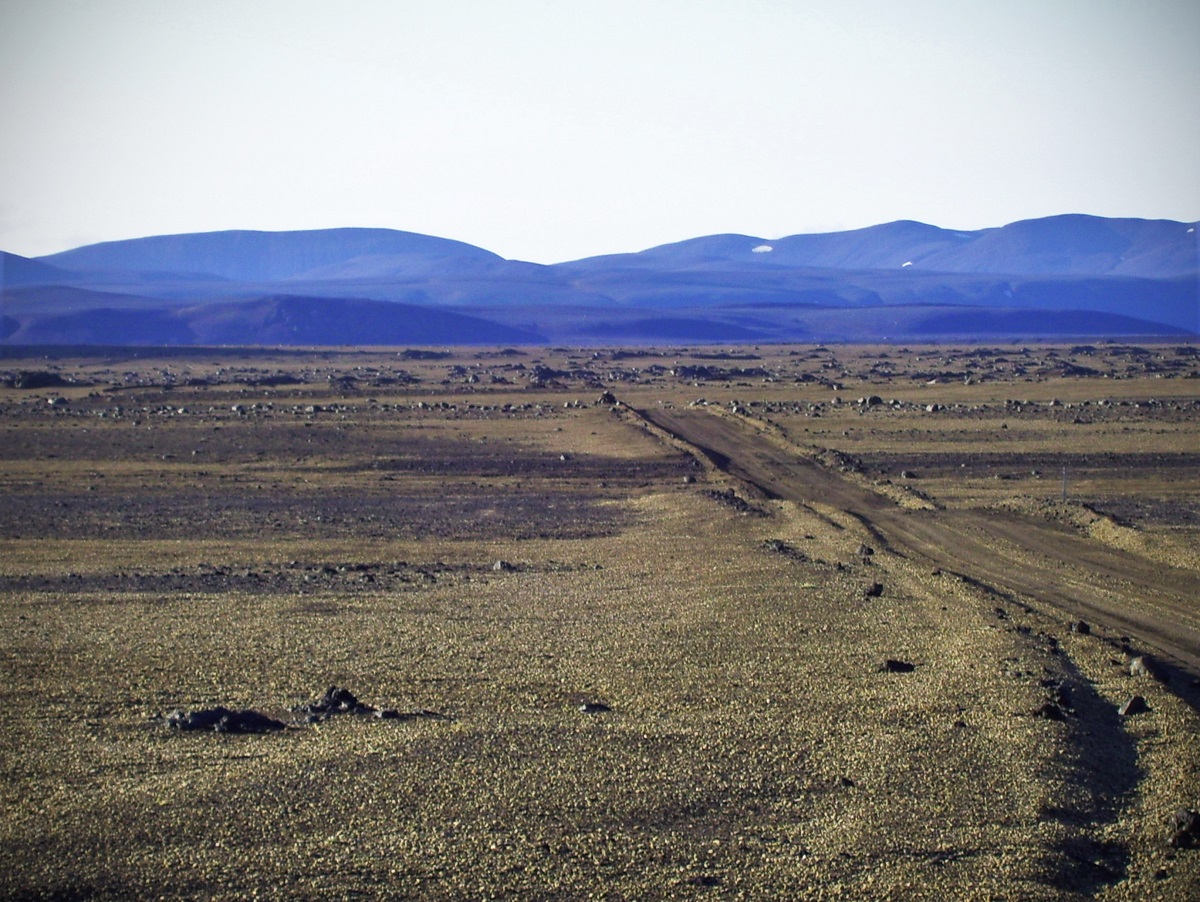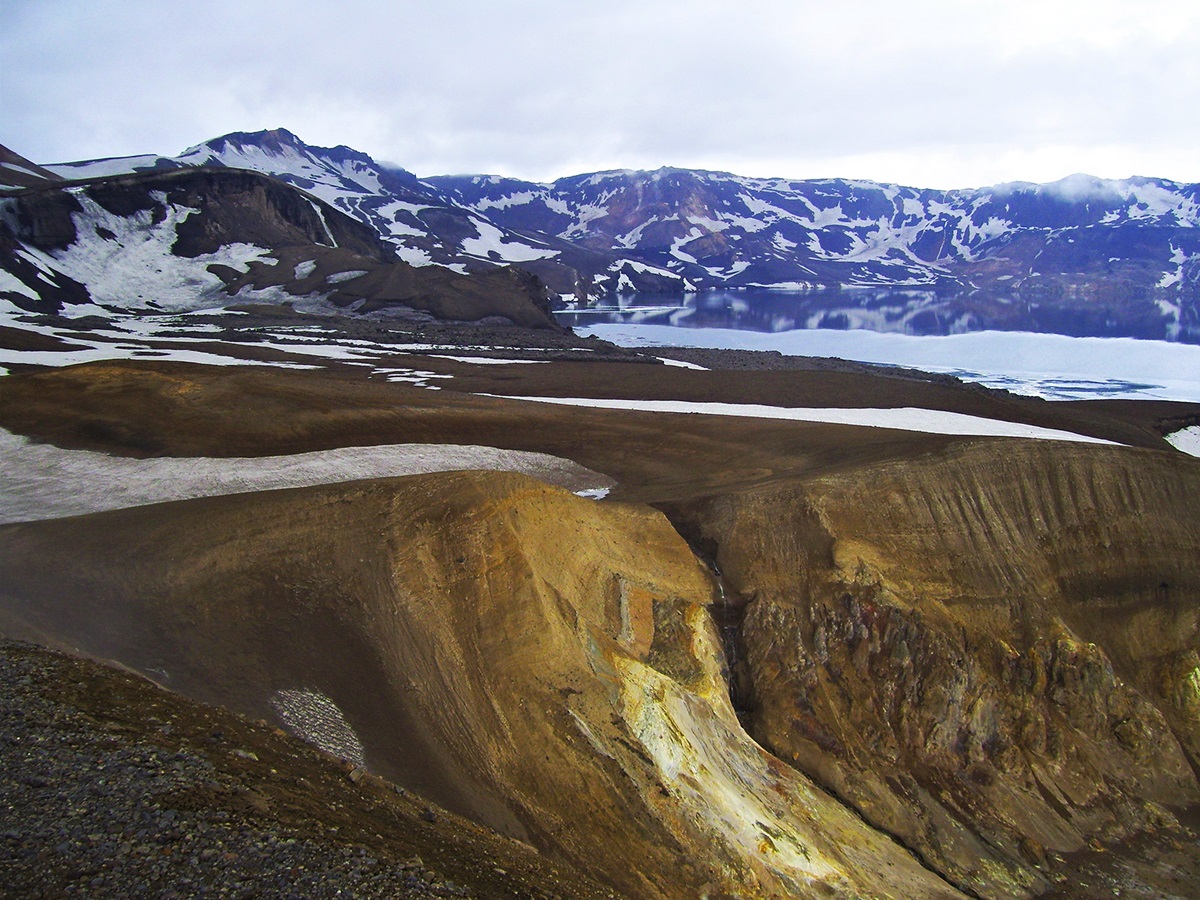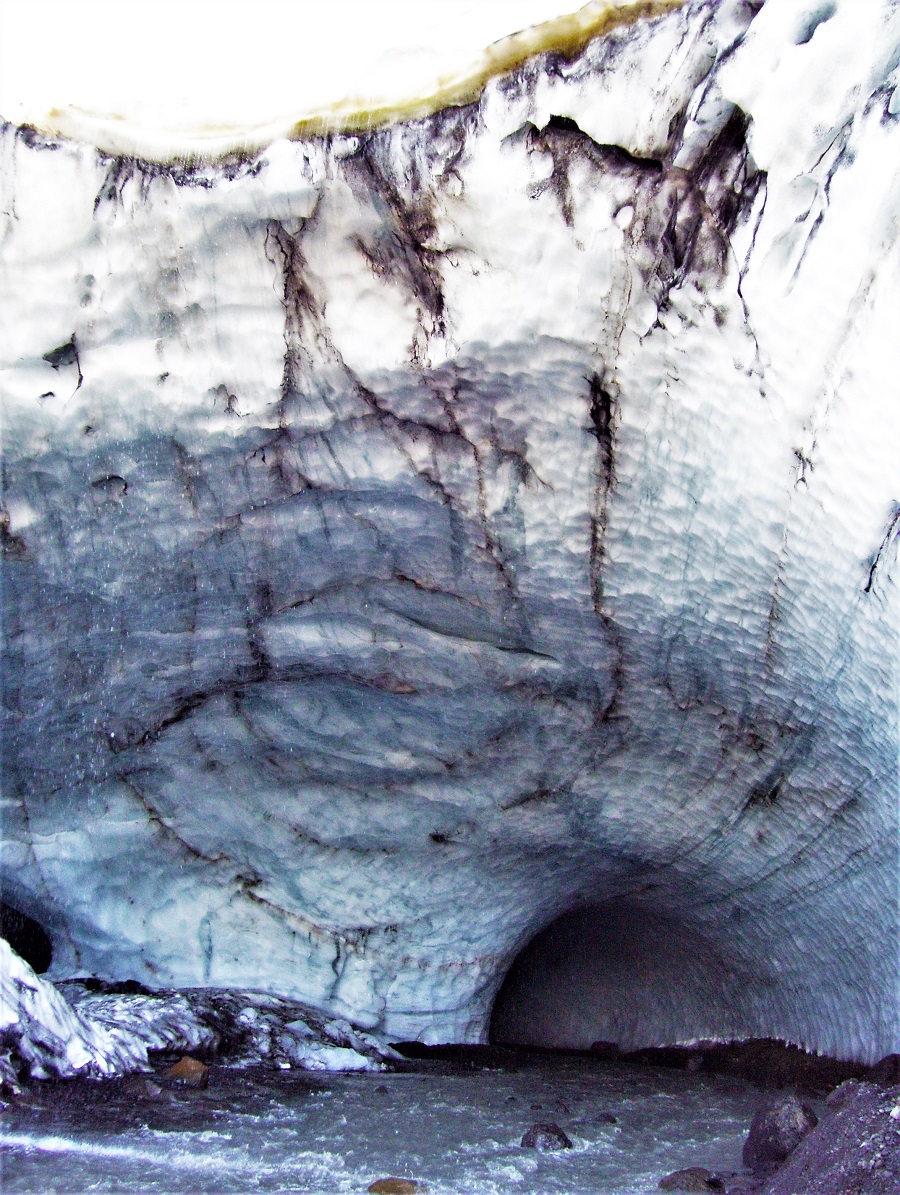How to Give Up and Still Keep Going
I put my head down and counted the pedal stokes forward, but the wind pushed so hard that it felt like madness. My cheeks stung, my knees ached, and I just wanted to eat a hot meal and crawl into bed. I turned my head slightly to either side as the wind whipped my face. The rocky landscape stretched everywhere into nothingness. Iceland had turned bleak, and so had my attitude.
I fixed my stare on a lone, windblown sign in the distance. If I could just get there, then I would be somewhere! Slowly the sign drew closer. When I finally reached it, I stopped and looked around. The landscape was as barren as it had ever been, and the pavement went on in exactly the same way it had before. On the other side of the road, a rugged dirt track carved through the rocks and disappeared into the wilderness. This is where I was, and these were the options.

I got off my bike and pressed my map down into the ground, out of the wind. The next town was too far away. I found the red line of the dirt track on the map and traced it with my finger. The road twisted and turned over a hundred kilometers into remote interior Iceland. My finger followed the line until it stopped on a massive blank spot labeled Vatnajökull. The map described the spot as the world’s largest ice cap outside of the poles and showed its edges dotted with hiking trails and hot springs. Suddenly my mind slid into a flow of new, exciting possibilities. I was going on vacation!
The paved road had very little traffic, which meant that the dirt one would probably have even less. But there was always a chance that someone would turn down it eventually. And they’d probably be really nice folks who would give me a lift! Even if no one passed by, I still had everything I needed to camp for the night. With no further planning, I locked my bike to the road sign, slung my panniers over my shoulders, and started walking down the dirt track.
In hindsight, wandering alone into interior Iceland was not an obvious solution to any of my problems. It didn’t stop the wind or heal my knees or bring me closer to my destination. (Actually, it brought me farther away from my destination!) But it did solve an emotional problem. It was a way of giving up while still moving forward, and this felt exciting. The adventure had returned!
After a little while, a person did actually pull onto the dirt road, and he immediately stopped to give me a lift. He was Icelandic and spoke no English, so we communicated by waving our hands around and laughing. This ended as the road got rougher and I had to brace myself against the sides of the car. The view through the windshield alternated between open sky and dark earth as the car dipped up and down across giant ruts. I have no idea how long the car ride actually took, but it seemed like it went on for a very, very long time.

We arrived at a small hut where we parked and got out. No one was there. Then the driver said something to me in Icelandic, got back in his car, and left. I stood there, alone in the middle of a desolate, rocky field, and watched his car bounce away. Perhaps he had been lost all along? Or realized he had forgotten to turn off the oven and had to go back? I looked around at the rugged, wind-whipped earth. This was going to be a rather strange vacation.
I opened the door to the hut and went inside. It was empty but cozy, with a wooden table and a row of bunk beds. I flipped through my guidebook and read the description of the place I had landed upon: “Although some travelers are disappointed by the interior’s ultra-bleakness, others are humbled by the sublime sight of nature in its rawest, barest form.” And then in an information box below: “Historically…the general populace came to fear the vast backlands, which they considered to be the haunt of superhuman evil.” I cocked my head to one side. This certainly seemed worthy of further exploration. I went right back out the door.
I followed a hiking trail onto a winding hillside. The wind pushed sharp and strong, but it felt good to be walking instead of riding. I reached the top of a ridge and looked down onto a massive, snowy crater. Everything was covered in ice, and there was no sign of life in any direction. I felt like I had been set loose alone on another planet. This kind of solitude scared me but also made me feel more whole.
Eventually I hiked back down to the hut, ate a bar of chocolate, and took a nap. That afternoon, several other people arrived, and I struck up a conversation with a couple of German tourists. They had a Jeep and were keen to explore more of the backroads. When I told them that I was on vacation from my bicycle, they laughed and invited me to come with them for a bit in the Jeep. The next day, we set out to visit an ice cave and some hiking trails. The cave was a giant, glittering tunnel that looked like it could melt at any time. On one of the hiking trails, we met a young Icelander who taught us how to sled down glacial slopes on the back of a shovel. Everyone was kind and funny, and their clothes all seemed impossibly clean.

After a couple of days, we drove back out to the paved road. As we neared the sign where I had locked my bike, I began to feel anxious. Part of me hoped my bike would still be there, and part of me hoped it would not. But when the sign finally came into view, my anxieties all turned into relief. There was my bike, tied faithfully to the post! I realized that I was ready to keep going.
The rest of the trip was still difficult. I didn’t know it at the time, but my saddle was adjusted too low for my height, and this is what caused me so much knee pain. The farther I went, the worse the pain got, until every pedal stroke felt like fire. I assumed this was normal and that other cyclists were just tougher than me. So I ate lots of ibuprofen and kept riding.
The farther I rode, the more I learned about cycling and the more I learned about myself. I still remember the day that I bought my first Gatorade. I drank the entire bottle in a gas station and instantly felt like a superhero. The whole trip I’d just been drinking water and eating dried fish and crackers. Once I learned how to replace electrolytes with sports drinks, everything got a lot easier. I also learned how to keep my skin covered better from the wind, how to choose campsites on the lee side of rocks, and how to pack my gear so everything didn’t fly away as soon as I opened my panniers. All of the things I did wrong were also the experiences I eventually learned from.
After a month of cycling, I made it all the way around the island and back to the airport. I was wind-whipped but strong. I was sore but happy. This trip was a thing that I didn’t know how to do, but still, I did it. It was a moment when I said yes to life, to adventure, and to moving forward.
I often wonder what in the world I have to share with people about my cycling experience. I am possibly the world’s worst planner. I am mechanically negligent. And I pedal incredibly slowly! But in spite of all this, I have learned how to go and how to keep going. And I’m pretty sure this proves that if I can do it, so can anyone.

